City economies as patterns of connection
In a healthy functioning city, various forms of urban capital, including natural, social, cultural — and economic — are enabled to flow smoothly and flexibly, along paths that are productive and enriching to the system of which they are a part. The most efficient patterns of capital ‘flows’ in a city are organic: well connected, rooted to ‘cores’ that branch out to ‘outer’ places. As we know, there is an ecology to the city, a pattern of reciprocal connections that underpin its resilience. We see this in the landscape and topography that (hopefully) informs the constructed city, and then in the design of human-made services of city-life, like transit and street grids, public spaces that serve as recharge areas (in all sorts of ways), and in the ways that water and energy and food are transmitted through the city.
This connectedness is an essential prerequisite for urban resilience in all its forms: environmental, cultural, social, and economic. Nowhere is the natural pattern of cities more alive than in their economies, which function as ecosystems of invention and opportunity, connecting ideas with designers, thinkers with doers, makers with traders, producers with buyers. As with all natural ecosystems, the denser and more diverse a city economy is, the more resilient and adaptive it can be, nimble and able to self-correct. At its root is the capacity of a city, through its economy, to provide multiple opportunities and choices for its denizens. This essay illustrates just how a city economy mimics nature, and needs tending, just as other natural systems do.
Filling gaps and seeing new opportunities: entrepreneurs create diversity and choice
As in all forms of urban life, a city’s economy is the result of combining an agglomeration of people with a particular place. Together, we make our way forming a web of connections that we then navigate, daily, to raise our families, earn a living, enjoy leisure and make a contribution to our common life. A diverse city economy provides many different kinds of economic opportunity, including for those who aspire to pursue an independent economic life, not working for someone else in an established enterprise, but in fact to start up a new venture and be an entrepreneur. Entrepreneurs are fundamentally searchers, looking for new ways to solve problems, close gaps, develop new products that make life easier, more productive, pleasant, fun. Entrepreneurs are resourceful: they see connections, gaps, and opportunities to try something differently. Larger cities like New York have been the perfect habitat for entrepreneurs because the city offers so much diversity in close proximity, especially of people. Different skills, knowledge, and tastes in an urban population makes it much easier to co-develop products or services that are adapted to particular users. If you have an idea and need a prototype made, someone here can do it. If you have a concept but need a technical expert to test it, someone here can do it. And if you have a dream, but need some financial capital to realize it, someone here has the resources to help you mount it.
Plus you have a test-market right on your doorstep. The hackneyed phrase, famously attached to New York, “If I can make it here, I can make it anywhere” is literally true. We have 15 million diverse consumers reflecting the cultural and ethnic preferences of the globe, within a 20-mile radius: if there’s a market for your offering here, there is probably a market anywhere.
A diverse city teems with choices
Entrepreneurs thrive on choices, because they’re always making them, choosing this approach over that, trying A but realizing B is in fact better. Trial and error is part of the entrepreneurial cycle, until you find the right choice. A city friendly to entrepreneurs makes that pursuit of finding easy. And perhaps most importantly, once found, the entrepreneur can access the resources they need to realize and to capitalize upon their idea.
It’s the urban economy, stupid
City economies drive national GDPs: we know generally that 70-80% of any nation’s wealth is generated from their productive cities. This has become more widely acknowledged over the last few decades, debunking the prevailing notion of previous times when cities were wrongly thought of as consumers of capital rather than net generators. But despite this growing acknowledgement from economists, economic and workforce development policies still aren’t particularly focused on the spatial form of the city, and how it may in fact impact upon the capacity of the city to generate wealth, and within it, affect the capacity of local businesses and the entrepreneurs.
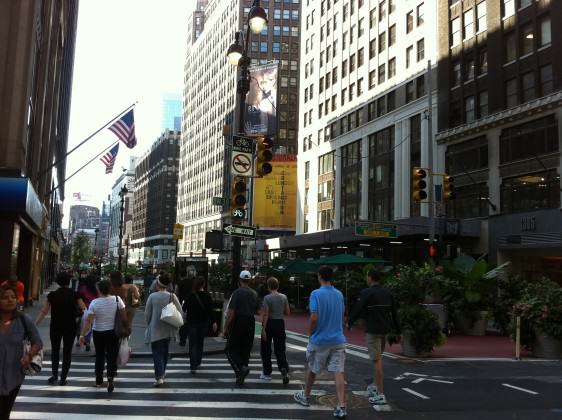
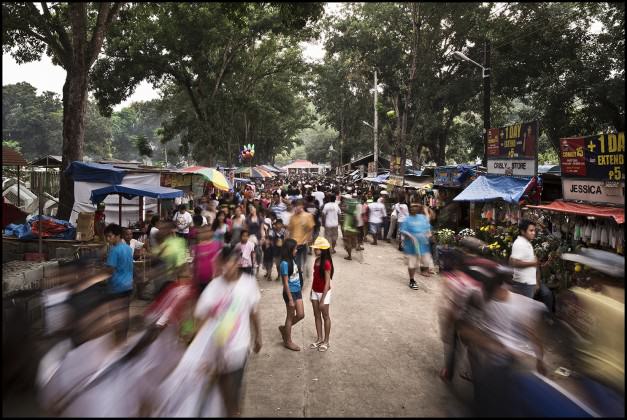
We live in New York City, the great urban laboratory that continues to manifest the challenges, and opportunities, of contemporary city life. But our circumstances, although unique to this place, are not exceptional. The world’s global cities share with us many similar struggles. One is how to continue to attract and then harbor new people and their ideas, and provide them with the conditions that allow their ingenuity and creativity to flourish, for them to search and find. People are what made New York New York. So too London, Hong Kong, Paris, and Shanghai, Mumbai and Rio. But as our cities grow, in wealth and population and physical size, are those characteristics that allowed entrepreneurs to contribute to their initial making imperiled?
Principles that underpin an entrepreneurial city ecosystem
Above, we mention diversity, choice, and proximity. We also touched on the ease of finding and access. These elements, characteristics typical to any life-giving ecosystem, are essential to supporting urban economic life, and in fact characterize the entrepreneurial process. There are others important ingredients that are probably less tangible, much harder to measure. Is a city ‘open’ to new ideas? Is there a culture of experimentation, of risk-taking? Does the city feel flexible, adaptive, creative, nimble?
Make way for serendipity and ecosystem ‘volunteers’
Cities that house significant numbers of entrepreneurs have a ‘vibe’. They seem more dynamic, ever changing, and responsive to new trends and styles and needs. You can be surprised in an entrepreneurial city: by a neighborhood which seems to have suddenly formed up around a coffee roaster, or a new funky shop selling clothes by consignment, or a community garden you serendipitously stumble upon, or a new app someone has out ‘in beta’ that helps you call a local cab or order some take out food. Entrepreneurial cities aren’t predictable, like university towns might be, or factory towns once were. Entrepreneurs are almost by definition non-conformists. They’ve rejected an existing approach or service and have started up a venture because they think can do better. Successful ones do. So in a city where entrepreneurs thrive, you see that kind of non-conformism manifesting physically. Neighborhoods don’t look the same: as in natural systems, they differentiate. Historically, this has often been by ethnicity, or class or race, or business niche. The local businesses reflect the tastes and preferences of those neighborhoods. In some cases, a micro-ecosystem forms, where a particular economic niche grows in proximity: most cities of a certain size have a Chinatown; an entertainment district; a garment district; a tech sector; a medical district. Large global cities form more than just one of each, and naturally spin off sub-ecosystems.
Porosity
Healthy entrepreneurial ecosystems — as in natural systems — are also characterized by porous edges, where there can be a flow within but also out to the adjacent parts of the city. This is critical to ensuring diverse access — both for the entrepreneur and the consumer. It allows the system to ‘re-fuel’ itself, to be exposed to other forms of innovation, other consumer preferences and inputs. Sometimes within neighborhoods you see an anomaly: for instance, a Mexican restaurant opens up in the middle of a Chinatown, which brings a new clientele into the neighborhood, who may shop for fabrics before they order their tacos. Rather than seen as an interloper, these volunteer species within the entrepreneurial ecosystem introduce new potential, new products, new variations (Asian fusion, anyone?).
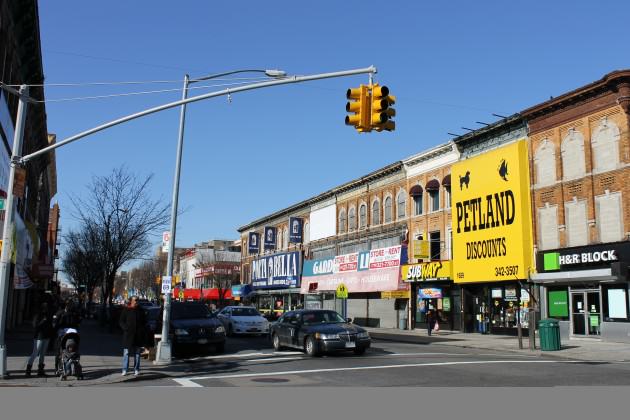
Interlopers signal innovation
In the early days of digital and social media, they were the interlopers, encroaching upon traditional journalism and publishing. Started by entrepreneurs who found un-served populations with unmet needs that new technologies could reach, these startups brought a new hip, legitimacy to entrepreneurship, which previously may have been perceived to be primarily the purview of geeky tinkerers working in their garages and basements on off-hours.
Similarly, over the last decade we’ve seen in urban environments a resurgent interest in bringing innovation into the social economy: mission-based enterprises focused on improving how society functions. Social entrepreneurship has emerged as an ambitious career choice, attracting highly educated university grads wanting to come up with disruptive innovations to transform everything from public education to approaches to re-incarceration and recidivism. Young people entering the urban workforce now are just as likely to reject any separation between pursuing private interests and serving the public good. They see no reason for their careers to not serve both by creating personal wealth and making the city better for everyone. Entrepreneurship is the new legitimate career aspiration, suggesting a skill set that is fundamentally ecological: adaptive, resourceful, flexible, and opportunistic.
Threats to an entrepreneurial city ecosystem: why the spatial city matters
The success of global cities like New York is often measured by their capacity to attract investment. Here is how that thinking goes: if global capital finds a safe haven here, we too who walk the streets and play in the parks are assured that the quality of our life will be maintained. But anyone living in this kind of global city knows that setting a city’s sights on attracting international investment, to the exclusion of fostering the entrepreneurial ecosystems that lie below the frisson of winning yet another global investment deal, is a fool’s errand. Here are just a few of the ways in which we see the entrepreneurial ecosystem can be undermined.
Monocultures kill diversity
As in good agrarian practice, diversity ensures the health of a city’s economy. For global capital centers this is an ongoing struggle. We need our Fleet and Wall Streets; we need that tax base; we need the financial means to invest in the ventures that our entrepreneurial community develops. The pursuit of global capital, though, can become a vicious cycle: where the only kinds of new development worth pursing are ones that provide the most expensive real estate. Here in New York that has set us up to think that Class A office space and high end residential is our only bet. Over the last few years our work at the Municipal Art Society of New York, a century-old, esteemed civil society organization concerned with the livability and resilience of this city, has raised questions about the overall sustainability of this winner-takes-all approach to urban development. Vibrant urban economies need a diverse mix of users and uses. That includes types of buildings.
Famed urbanist Jane Jacobs, cited often in this The Nature of Cities blog, famously said “New ideas need old buildings”, pointing out so definitively how dependent a vibrant city economy is on connecting the new with the old. Businesses grow incrementally, with old work being converted into newer work, and older, more affordable workspaces make that kind of creative morphing possible. Older buildings are cheaper to run (even if they need to be retrofitted) and therefore cheaper to rent. But there is also something ethereal, not quantatatively measurable, about older buildings that appeal to entrepreneurs. Maybe its because they see the possibilities in adapting an older space to their newer use, and that just feels better than the pristine floorplates of new construction. Or maybe they just like them because they’re cheap. But old spaces are most often where today’s entrepreneur wants to work. A dynamic entrepreneurial ecosystem needs a mix: of old and new, of small suppliers working in make-shift spaces, and larger corporate services.
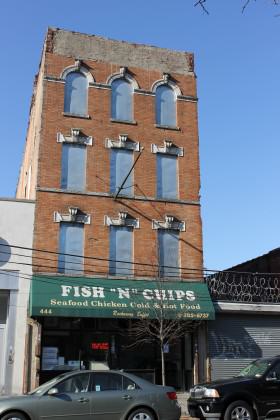
We need city policies that support diversity and inhibit monocultures
Predators in global cities take many forms. Up-zoning initiatives that incentivize new developments also have the potential to crowd out other existing building types and uses that are an essential part of the entrepreneurial ecosystem. Growing institutions like universities and hospitals run the risk of encroaching upon the mixed nature of their neighborhoods that are also home to those smaller enterprises, housing and offices that in fact act as their supply-chain, feeding their core business and supplying their workers with the amenities they need. Large-scale developments of any kind, either private or public, need to be designed with great care to allow for detail and differentiation, always enabling the organic mix that we know will grow, if permitted.
Keeping the street affordable to a diverse mix
Probably the most significant threat to the diversity of use and user in a city is the cost of land. Where we can see this most viscerally is on the street. If retail space becomes so expensive, smaller independent businesses that deliver the variety and serendipity of urban street life can’t manage. Just as when described above when institutions become predators, if the market crowds out smaller enterprises it disrupts, and not in a good way, the entrepreneurial supply chains that the city’s larger, dynamic economic enterprises rely upon. Anyone traveling to New York City and spending time in Manhattan will be struck by the dominant presence of two repeating uses at key intersections: banks and drug stores, in some cases occupying all four corners.
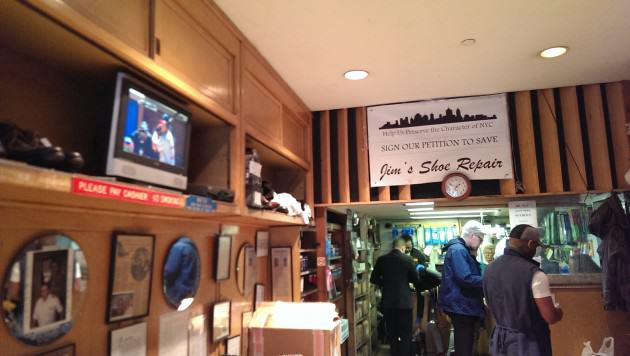
Here is a typical story: a decades old shoe repair business operates in east midtown, a neighborhood home to one of North America’s most economically productive districts. Jim’s family business not only resoles the shoes of the city’s business elites, he also is the one surefire place where fashion designers can get a dozen pairs of pumps dyed over night for their runway show the next day. Over the almost eight decades that Jim’s business has operated, around him the retail landscape has changed, and in 2014 he will potentially have to close, because the Duane Reed pharmaceutical chain that surrounds him will finally engulf his business. And they are unlikely to add shoe repair to their offerings. Again cities must find ways to secure the presence of smaller independent enterprises that service the entrepreneurial ecosystem. Could Jim have stayed had his tenancy been secured by his buying his unit, or his landlord incentivized to keep him there?
In less affluent neighborhoods you see other kinds of dominant businesses: fast food outlets, cheque cashing stores. What ways are available to the city to ensure a mix of retail uses that make room for the smaller entrepreneur? In New York City, even in neighborhoods where the average household income is lower, commercial and retail real estate is still very expensive; all the more reason to explore ways to make access to prime spaces affordable to local merchants.
Our defense of these kinds of businesses is not out of nostalgia, but rather an awareness that sustainable city life is dependent on the mix of services and amenities. To attract and keep entrepreneurs choosing to open their businesses in New York City, we need lots of varieties of everything: restaurants, suppliers, tech companies and investors. And shoe repair shops. And we also need attractive public spaces and infrastructure that makes our density an asset and not a liability. If the streets become too crowded, the transit system overwhelmed, and there is no place for respite and recreation, entrepreneurs will leave in droves.
Which takes us back to choice. The entrepreneurial ecosystem offers many choices.
Draconian zoning and other outdated rules inhibit choice: let’s make it simpler
Zoning is a product of the last century and no doubt contributed to cities being freed from the tyranny of soot and noise and refuse, which literally contaminated urban life for decades following the industrial revolution. But, for the most part, the threats to cities in this century are quite different. Generally, entrepreneurs need access to a variety of places: they work wherever they are, on their own, and with others. In their apartments, the local coffee shop, in public places like parks and libraries, in bars, in pool halls. Zoning that prohibits businesses from operating in certain parts of the city is outdated, protecting neighbors from uses that no longer threaten to encroach upon their lives. We mentioned above about the priority of access for entrepreneurs: to each other, to capital, to markets.
One glaring example where rules impede access is in public housing, where residents are prohibited from (legally) running businesses out of their units. This isn’t a challenge unique to public housing, as similar prohibitions exist in many forms of rental housing. But the difference may be one of enforcement. Either way, people have run businesses (formerly, and rather quaintly, called ‘cottage industries’) out from the backs of their vans or yards or back bedrooms forever. Now with the Internet people can do this less conspicuously [1]. And yet we continue to put up barriers to this form of economic life, instead of finding ways that enable it, addressing any real risks, and ensuring some form of monitoring and taxation can be incorporated. Further, the administrative burden we place on people willing to risk their own resources and livelihoods is out of proportion to the economic benefits their ventures can potentially bring to the city. A city friendly to entrepreneurs would be aggressive in findings ways to ease their establishment [2].
We need city policies that make access to shared services easy
Another way in which a city economy acts like a natural ecosystem is in its reusing of waste. Ideally a vendor would always prefer to sell his excess to another user, rather than pay to have it landfilled. (A recent trip to one of the new businesses in the Brooklyn Navy Yard incubator space showed a local distillery, which sells all of its waste by products back to the upstate farms that supply it with grains). Scrap industries of all kinds have grown up in the city: metal, fabric, used clothing, food. Now entrepreneurs have spotted other forms of waste or excess capacity, not in disposable goods, but in under utilized resources or ‘slack’: extra bedrooms, under used tools, spare office space, cars left parked in garages except for a few hours on the weekend, empty industrial kitchens.
The rise of the sharing economy, again something that has existed informally forever, but is now able to formalize easily though the Internet, has exposed in the city new forms of income generation. Our colleague Lisa Gansky, serial entrepreneur and author of The Mesh, says the fundamental principle of the sharing economy is ‘where access trumps ownership’. In dense urban environments where space is scarce, owning less and sharing more makes sense. Urban dwellers already do this: we share parks, cafés, libraries, skating rinks and pools. Why not create the city mechanisms to make the sharing economy easier [3]?
We need policies that incentivize making better use of empty, or underused spaces
Entrepreneurs are the ones who really do know how to make a silk purse from a sow’s ear. Many are artists, again familiar with finding frugal ways to create something of value. Cities are full of spaces waiting to be better used, shared, providing opportunities for new uses and collaborations. Here are some obvious examples: underneath elevated expressways; lands that often surround public housing; the second and third floors of buildings that line otherwise very successful commercial corridors. City governments can find ways to incentivize smart, imaginative design thinking that liberates these spaces and puts them into productive use. There was a time, not so long ago, when no one wanted to live or work in an old factory. If it was a city without development pressure, the old building just waited, until popular tastes and investment caught up with its potential. In hotter markets, we lost some of that stock, its potential never to be realized.
Right before us now are spaces waiting to be used anew, for purposes we may not have even imagined yet, but old rules remain, demanding too many forms of egress, or concerned with regulating competing uses, and stand in the way of these spaces being released into play. We are not advocating for the elimination of practical zoning, which helps cities function in safe, fair ways. But we know that there are rules still on the books that impede trying new approaches. And we would go even further: we need new tax credit schemes, new investment vehicles that entice developers and financial institutions to invest, and property owners (public and private) to be interested in opening these spaces up [4].
One size never fits all
Part of nurturing economic diversity in cities means allowing differentiation to happen. The not so secret ingredient to successful global cities is immigration. Newcomers arrive with their skills and preferences, and often with a profound work ethic and experience running businesses in the countries they have left. Quite naturally, newcomers chose neighborhoods to settle in and establish their businesses where family members and other cultural connections exist. This may lead that neighborhood to physically develop in ways that reflect the preferences of the people that have chosen to live there, creating those micro-ecosystems we discussed above. Land uses, building types, outdoor signage will begin to reflect the cultural make up and economic preferences of the neighborhood. Planning policies coming from City Hall needs to support these unique, varied needs. The idea is not for them to all look the same: but rather reflect unique identities. So too the needs of local entrepreneurs will vary. We need to find ways to decentralize planning and build the capacity of local community members to participate in decisions that affect them.
Co-working and co-production: enabling connections
Entrepreneurs on both sides of the equation: those looking to create economic wealth and those building social capital (and those doing both) are increasingly looking for spaces to work in the company of others. These co-working spaces are literally hives of development. Members can work alone, or easily find collaborators within their co-working community. Writers find publishers, techies find marketers. These spaces are flexible, so if your enterprise grows the space can continue to accommodate you, up to a point. Incubators are another form of co-working but offer more support to help new enterprises scale. In some cases public monies are invested in these spaces, through rent subsidies generally. They might also receive workforce development program money if training is an integral part of the facility’s aims [5]. Co-working spaces run as profit-making businesses continue to pop up, but there is the challenge to making them both profitable for their owners and affordable for their users.
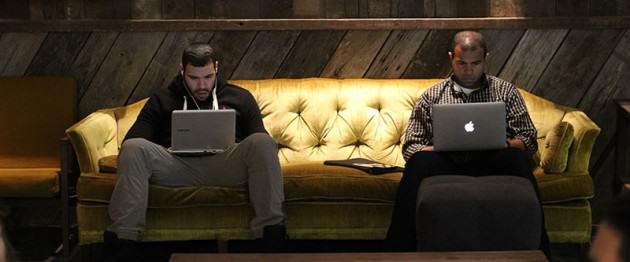
One unusual model is that of the Centre for Social Innovation, a mission-based non-profit to support social innovators through co-working and shared programming. Originally based in Toronto, CSI was wooed to New York City by an enlightened property owner Scott Rechler who had purchased the majestic Starrett LeHigh Building in the west Chelsea neighborhood of Manhattan, a sprawling multi-story building that housed blue chip design and media companies. Rechler wanted to find the best co-location model to infuse his building with the energies and ideas of startups. He settled on CSI and offered them early support to develop a New York operation. With a robust tenant mix and extensive programming, the benefits of CSI accrue not only to its members but also to the buildings’ other tenants.
Co-working space are another form of micro-ecosystem, a way of enabling entrepreneurs to make connections and find access. Scott Rechler’s Starrett-LeHigh building is mimicking the life of mixed tenancy buildings all around the city. In the past tenants may have occupied entire floors, but now enterprises may be smaller and would ideally sublet a portion of their space, or wish to co-locate with related enterprises on the same floor. But without an amenable landlord like Rechler, the legal logistics of arranging sub-leases often prohibits these kind of flexible arrangements. How can cities encourage developers and landlords to make smaller spaces easier to rent? In new developments, in addition to provisions for affordable housing, should we be considering forms of inclusionary zoning that set aside percentages for smaller, entrepreneurial ventures?
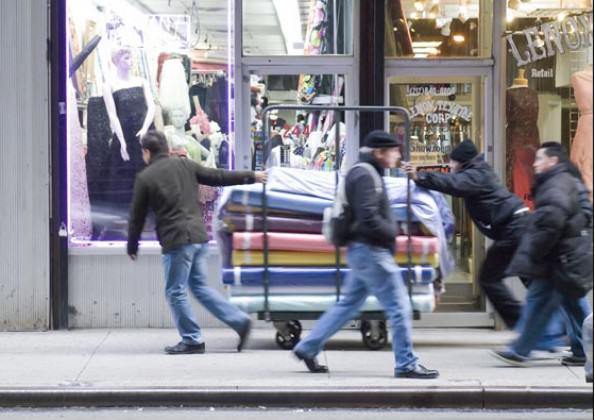
New York City still has an intact garment district, where fabric cutters and piece workers share buildings and maybe even share production space. And nearby independent button sellers and bead stores do both a wholesale and retail business. But only a few short years ago this district was threatened by development activity that would have shattered these webs of exchange [6]. The garment district isn’t just a throw back to simpler times before offshore production displaced the larger factories that used to also be located there. It demonstrates the improvisational quality of true urban economics. Small ideas are improved upon, value is added though craftsmanship, and finished products are brought to market under the watchful eye of their creator. And city economic life doesn’t stop there: products can be replicated in factories located somewhere else, where land and labor is cheaper. But the entrepreneurial process, that took an idea through its gestation, and co-developed it for a potentially global market, is fundamentally an urban one, made possible by diversity, choice, serendipity, access, proximity, improvisation, adjacency, supply chains, immigration, and sharing: all attributes of the entrepreneurial ecosystem.
A cautionary tale
As with any natural system, feedback loops are critical to a city’s survival. When a city starts to worry more about the personal income tax filings of its residents by postal codes, rather than the per capita investment in new businesses or number of new patents registered; if land use policies, zoning and planning decisions favor larger lot assembly and mega developments over the incremental, more modest developments that accommodate smaller enterprises; if we continue to resist the changing consumption and production preferences of our urban populations who are choosing to share rather than own; and uphold archaic rules that discourage people from being resourceful and inventive in finding new ways to earn self-employed income, then the entrepreneurial ecosystem upon which the wealth of the city was based in the first place, is imperiled.
Vin Cipolla & Mary W. Rowe
New York City
Further reading:
The Nature of Economies. Jane Jacobs.2000.
The Economy of Cities. Jane Jacobs. 1970.
Cities and the Wealth of Nations. Jane Jacobs.1984.
Natural Capitalism. Paul Hawken. 1999.
The Mystery of Capital. Hernando de Soto. 2003
Sanford Ikeda. http://www.fee.org/the_freeman/type/wabi-sabi
Market Urbanism. http://marketurbanism.com/
The Mesh. Lisa Gansky. http://lisagansky.com/
Notes:
1 — Etsy, an on-line platform based in Brooklyn, New York to connect artists, makers and artists directly with consumers, now has a membership of 80,000 people and on average contributes $25,000 annually to a typical vendors household income. http://www.etsy.com/about?ref=ft_about
2 — For a discussion of the ways in which archaic public policies impede local entrepreneurial activity and also favor larger chain businesses, have a look at the work of Stacy Mitchell at the Institute for Local Self Reliance and their New Rules Project http://www.ilsr.org/initiatives/independent-business/ And for a relatively new approach, look at the ideas of urban provocateur and architect Andreas Duany and his new initiative called Lean Urbanism: http://nextcity.org/daily/entry/project-for-lean-urbanism-congress-for-the-new-urbanism-andres-duany
3 — Airbnb just announced a new initiative to encourage cities to enable the sharing economy, called the Sharing City: https://medium.com/p/db9746750a3a. Also there is a broad network of advocates for the sharing economy in cities here: http://www.shareable.net/news/cities
4 — In 2012 Hunter College Center for Community Development with the non-profit organization Picture the Homeless, explored the potential to develop second floors and vacant buildings in New York City into affordable housing. See http://www.picturethehomeless.org/Documents/Reports/PH01_report_final_web.pdf
5 — Successful examples here in New York City of publicly funded spaces are Hot Bread Kitchen, http://hotbreadkitchen.org/ which trains immigrant women to work in the baking industry, sells products at local farmers markets and also provides production space for artisinal food entrepreneurs, and The New York City Accelerator for a Clean and Resilient Economy http://www.nycacre.com, a partnership with the city’s economic development agency and a local university NYU-Poly, which is focused on the intersections between buildings, energy, technology, and data. These enterprises demonstrate the range of entrepreneurial opportunity that exist in a diverse global city: its not confined to just the knowledge economy and workers with advanced degrees. The food truck phenomenon, taking many global cities by storm (at least those that are smart enough to permit it), is a great example of a relatively accessible choice for entrepreneurs without formal educational credentials.
6 — In 2010 and 2011 MAS worked with other civic advocates including the Design Trust for Public Space http://designtrust.org/ and long time NYC-based fashion designer Yeohlee Teng http://yeohlee.com/ to advocate for the health of local entrepreneurial ecosystems like the garment district: http://mas.org/urbanplanning/garment-district/. For subsequent MAS work that includes economic diversity, please see: http://mas.org/urbanplanning/
about the writer
Mary Rowe
Mary W. Rowe is an urbanist and civic entrepreneur. She currently lives in Toronto, Canada, the traditional territories of the Anishinabewaki, Huron-Wendat and Haudenosauneega Confederacy, and works with government, business and civil society organizations to strengthen the economic, social, cultural and environmental resilience of the city and its neighborhoods.








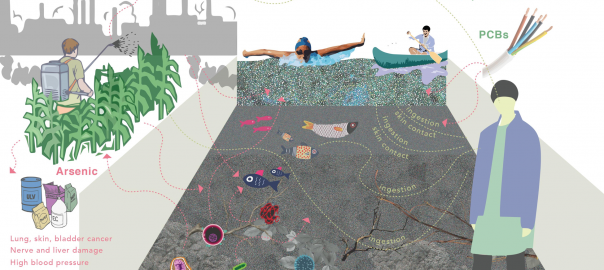

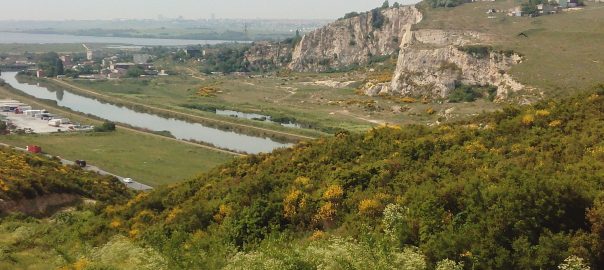

Hi Dipti – sorry to be slow in responding to your thoughtful comment. I particularly love this phrase: “Occupational and functional divergence in cities are the most crucial criteria for cities “. That is true for cities in the global north too – a key ingredient in urban resilience!
Hi Gregg! Sorry to have missed your comment here — yes indeed you are quite right, cities like New York are net contributors to state and national tax bases and ‘senior’ levels of government forget this and then neglect the golden goose that is laying the eggs in the first place. And as you point out, its not just about the money, its about the decisions that are made/designs that are out of step with what local communities need. That’s why we argue for greater subsidiarity and devolution – with Local taxing authority/capacities to raise revenues.
Too many resources are stolen from cities in the states by the federal government, which installs city-destroying infrastructure at a truly breathtaking pace. The battle for resources is won hands down by the feds, and it has been so for 150 years. Can enough of us band together to value our cities enough to stop the thievery and keep our almost all of our tax base in NYC, for example. My enterprise is a city transport systems one that links city enterprises in a city-optimized manner. The infrastructure on which we operate, however, is built for semi-tractor trailers as opposed to city-optimized modes such as ours. Yet we persist to date. The battle is feds vs cities, and it’s not been competitive of late.
Vin Cipolla as an entrepreneur has the right percetion of city cores which are the nucleus of the cities . Cities are encountering a change in the morphology. it is not only the physical but also social and cultural. Cities have diverisfied activities which makes cities going. Occupational and functional divergence in cities are the most crucial criteria for cities especially for the Third World cities. Urban planning is required to create a regenerative cities. This would enable to decide about urban space utilisation. Will zoning would deliver a better solution? City policy makers and urban dweller should come together for survial of cities. Urban dwellers could subsist on these cities. Activities and sustanace could be the urban vanguard.